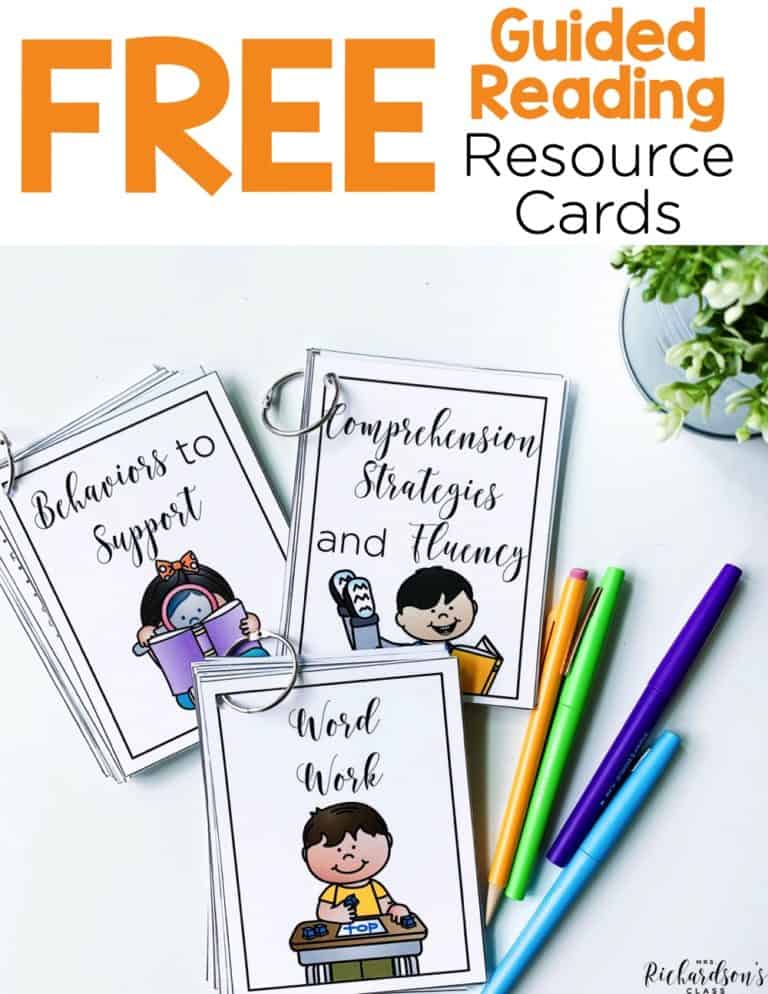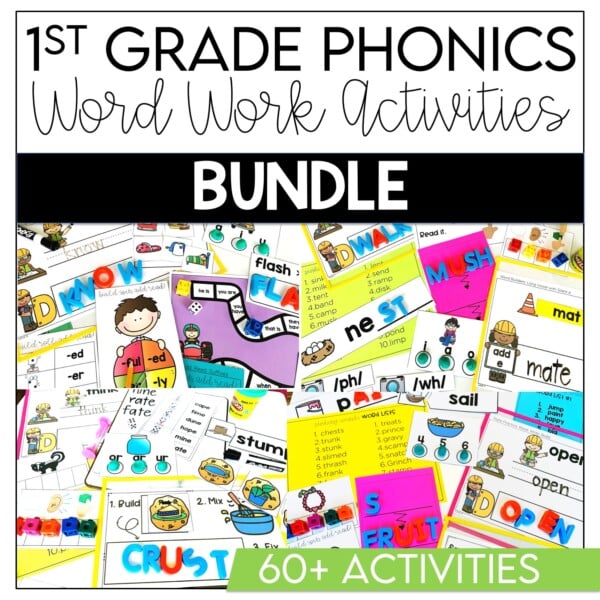


When it comes to a guided reading lesson (or a reading small group lesson), there are many ways to approach it. Some people pull one group a day, and some people, see all of their groups each day. Some teachers use a one-day lesson template and others use a two-day lesson template. Basically, everyone has their own way of doing things, which I totally understand, but there are three things that we should all avoid during a guided reading lesson.
In the past, guided reading was associated with leveled books pretty exclusively. With the science of reading, we’ve learned that this isn’t the best reading instruction practice. While leveled readers have their place in reading small groups, we need to begin with decodable books instead.
Using decodable readers gives students the opportunity to practice their phonics skills in a text that is aligned to a certain skill. Decodables also encourage students to attend to the text they are reading, instead of merely looking at the pictures to help them decode words.
We have all been there! I know that I have. I am pressed for time, I only have thirteen minutes with my group instead of my normal twenty minutes, and I cannot get through the full lesson like I would prefer. Something has to be skipped.
It cannot be word work. Giving students time to explicitly practice working with letters, sounds, and words is an important pillar when it comes to literacy instruction. Phonological awareness is a key to learning to read. Doing word work during your guided reading time allows you to coach students through their work and monitor how they are growing in this skill.
To prevent creating word-callers, we must teach young readers how to decode words by attending to the text carefully. Sometimes students will just look at the beginning of the word and guess the word based on the beginning sound. We don’t want them to do this, we want them to look at each letter and make every sound in the word.
After students make every sound in a word, we want them to blend the sounds together. They will probably blend them together slowly at first, and then faster as they keep practicing. Blending the sounds together helps them read the word.
Then, we want them to use meaning and syntax to cross-check. This is not always a one-and-done thing. They may sound it out, cross-check, go back to the word and sound it out, then cross-check again before they land on a word that is correct. This will lead to students understanding what they’ve read and comprehend it.
To help your students to remember to attend to the text carefully, I have some FREE Prompting Posters for you to grab. You can hang the posters behind your teacher table and use the small helper cards for personal reminders for your students. Get them HERE!
pin it
We all start somewhere, learn as we go, and continue to grow in our teaching practice! Learning more and more about best literacy practices helps us create a rich literacy environment for our little learners. What do you think you might change about your reading small groups lesson?

Want to use the latest research to boost your readers during small groups? This FREE guide is packed with engaging ideas to help them grow!

I’m a K-1 teacher who is passionate about making lessons your students love and that are easy to implement for teachers. Helping teachers like you navigate their way through their literacy block brings me great joy. I am a lifelong learner who loves staying on top of current literacy learning and practices. Here, you’ll find the tools you need to move your K-2 students forward!



| Cookie | Duration | Description |
|---|---|---|
| cookielawinfo-checkbox-analytics | 11 months | This cookie is set by GDPR Cookie Consent plugin. The cookie is used to store the user consent for the cookies in the category "Analytics". |
| cookielawinfo-checkbox-functional | 11 months | The cookie is set by GDPR cookie consent to record the user consent for the cookies in the category "Functional". |
| cookielawinfo-checkbox-necessary | 11 months | This cookie is set by GDPR Cookie Consent plugin. The cookies is used to store the user consent for the cookies in the category "Necessary". |
| cookielawinfo-checkbox-others | 11 months | This cookie is set by GDPR Cookie Consent plugin. The cookie is used to store the user consent for the cookies in the category "Other. |
| cookielawinfo-checkbox-performance | 11 months | This cookie is set by GDPR Cookie Consent plugin. The cookie is used to store the user consent for the cookies in the category "Performance". |
| viewed_cookie_policy | 11 months | The cookie is set by the GDPR Cookie Consent plugin and is used to store whether or not user has consented to the use of cookies. It does not store any personal data. |
10 Responses
This is my first year teaching first grade. If you don’t take turns reading then how do you do it? Have them all read out loud together? All read silently together? Thanks for any advice on this.
Hi Meghan! Great question! I have my kids whisper read all at the same time. It takes time and practice, but they get the hang of it really quickly. I start the child who I am going to take a running record on, then I tap my hand on the table and the others can begin. That helps ensure that the child I am assessing is usually reading ahead of the others. I also liked to have the others use whisper phones, too! This helped with them reading and listening to only their own reading.
Great tips! Thank you!
You are very welcome!
Thank you!
This is great the “3 things to avoid”. Is there an article to follow this up with….how to manage an effective reading group? 🙂
Hi Olivia! I love that idea! I’m adding it to my blog post list. 🙂
Maybe not every time, but I think it is important to take some time to write about what they’ve read too.
Hi Kim! Absolutely! I totally agree! I like to squeeze it in every time if possible!